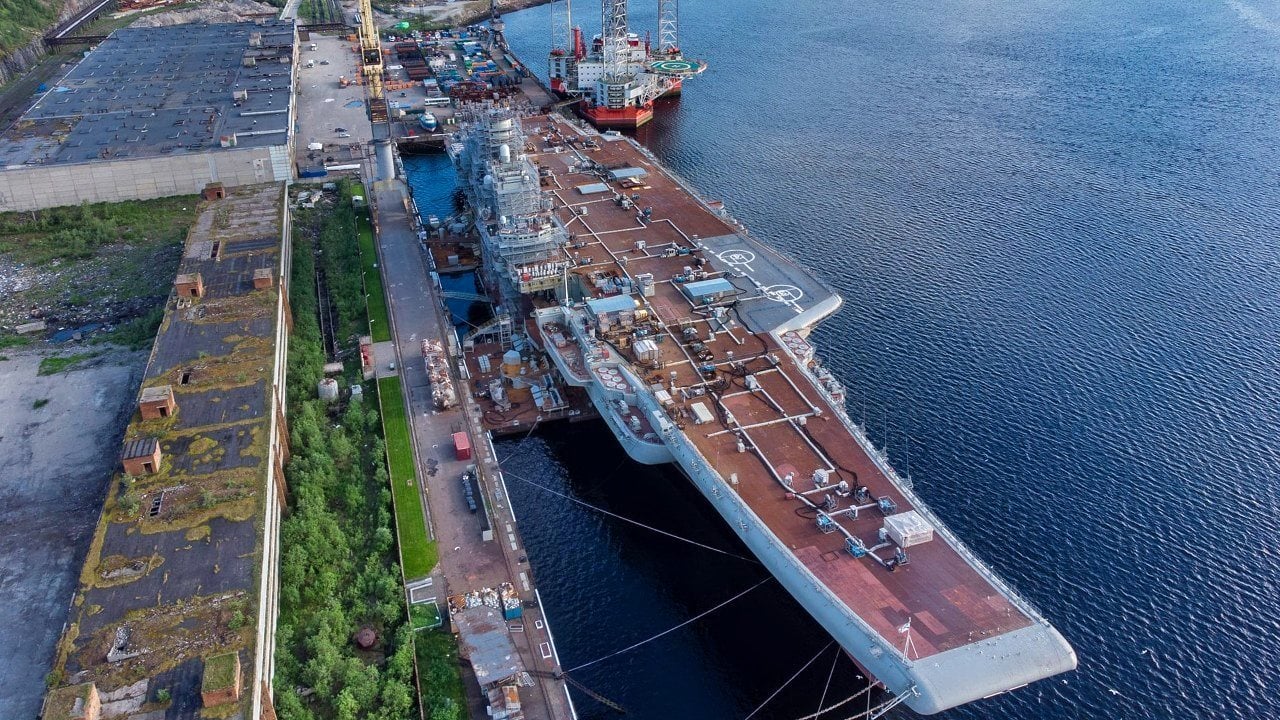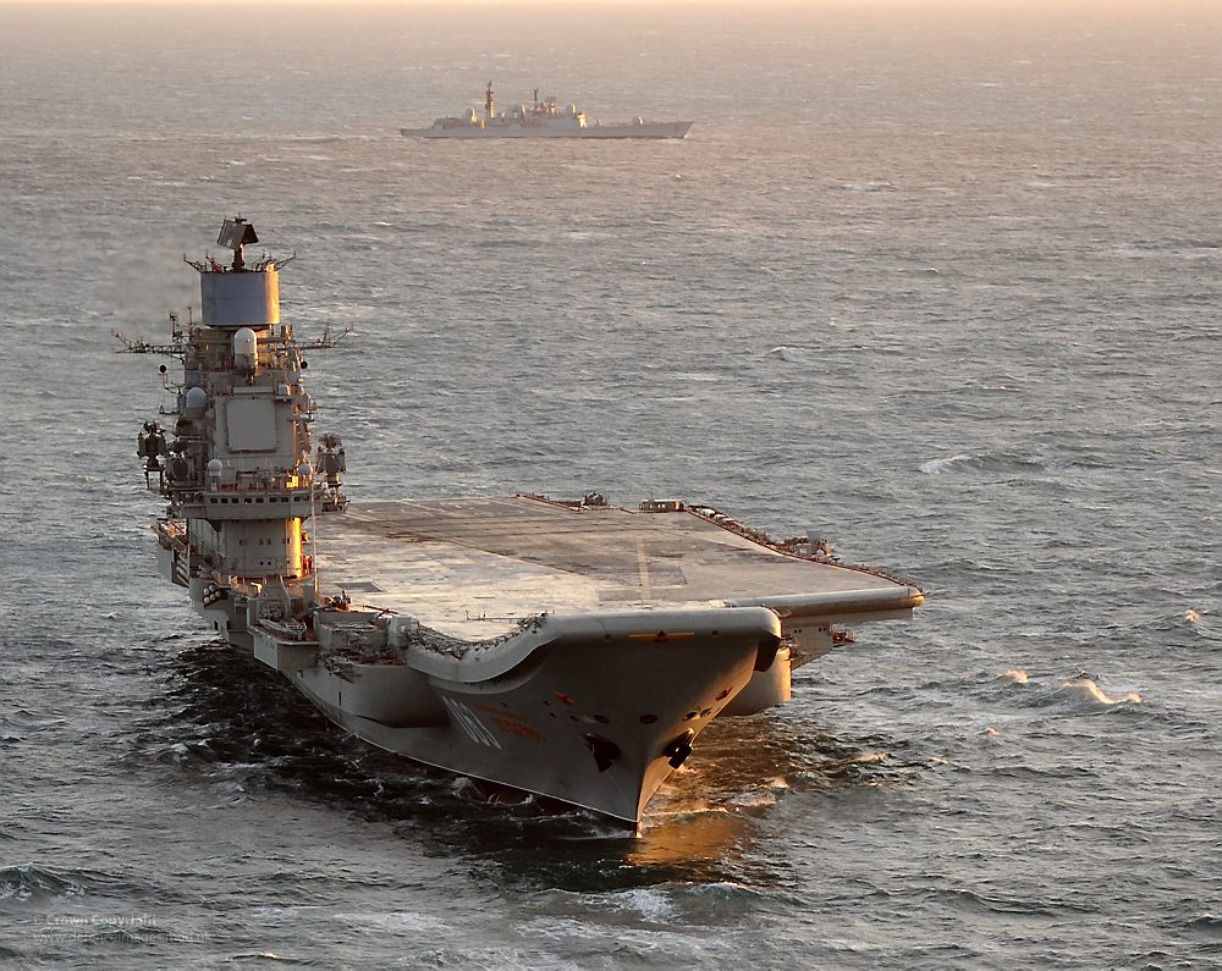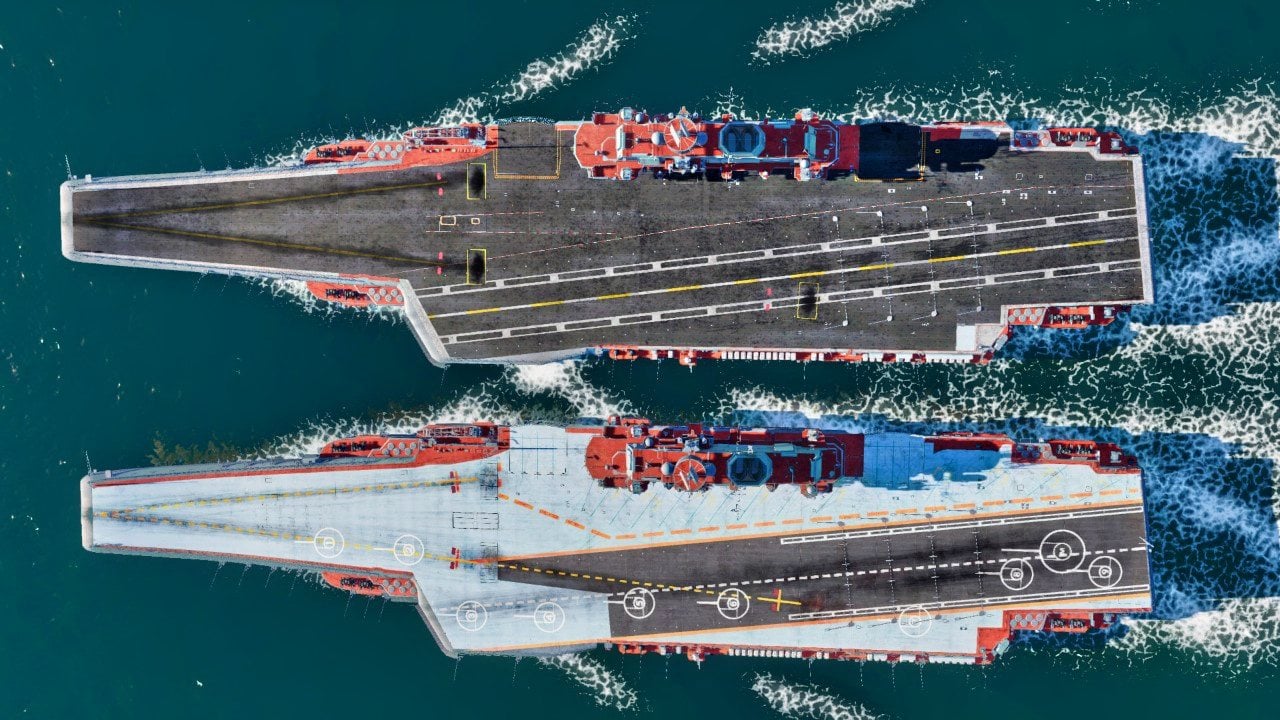Russia's Admiral Kuznetsov Aircraft Carrier Can Be Explained in 2 Words
Russia's only aircraft carrier, the Admiral Kuznetsov, has faced numerous technical issues and maintenance problems since its commissioning in 1991. Originally laid down in 1982, the vessel was intended to project Soviet naval power and is classified as a "heavy aircraft-carrying cruiser" to navigate international regulations like the Montreux Convention.
Floating Coffin: Russia's only aircraft carrier, the Admiral Kuznetsov, has faced numerous technical issues and maintenance problems since its commissioning in 1991. Originally laid down in 1982, the vessel was intended to project Soviet naval power and is classified as a "heavy aircraft-carrying cruiser" to navigate international regulations like the Montreux Convention.

-Equipped with a ski-jump flight deck, it operates Su-33 and MiG-29K fighters but lacks catapult systems used by U.S. carriers. Despite its challenges, Russia continues to invest in modernizing the carrier to extend its service life by 25 years.
-Critics argue that resources might be better spent on developing new carriers, questioning the viability of maintaining the aging Kuznetsov.
Russia's Admiral Kuznetsov: The Troubled Journey of Its Only Aircraft Carrier
Russia’s only aircraft carrier, the smoke-spewing, broken down Admiral Kuznetsov, is described by the Russian Navy as a “heavy aircraft-carrying cruiser.” While that might sound impressive, it is not. Admiral Kuznetsov is a continuing embarrassment for the proud Russian military.
The only reason one can assume that the Russians want to keep this national embarrassment around is to train crews for the future, supposedly better, aircraft carrier fleet that Moscow has been planning to build since 2017.
Still, the carrier is a smoldering embarrassment that any other nation would have scrapped years ago. Indeed, Admiral Kuznetsov was more of an experiment than anything else – one undertaken at a time when the Soviet government was on its way to history’s dustbin.
A Brief History of the Admiral Kuznetsov
Originally laid down in 1982 and commissioned in 1991, the same year that the USSR collapsed, Admiral Kuznetsov was a product of the Soviet Union’s ambitions for a greater navy. The carrier was intended to project Soviet air power and provide a strategic advantage in any potential conflict.

Even at the start of this project, though, Moscow had to make compromises – if not for budgetary constraints or technological limitations, then for strategic disinformation purposes. For instance, its qualification of being a, “heavy aircraft-carrying cruiser” was done expressly to skirt international rules. Russia is a mostly landlocked nation. It has just four warm-water ports, with possibly its most important one, the naval base at Sevastopol in Crimea, existing along the Black Sea. Since Turkey controls the entry point to the Black Sea for Russia, Moscow must adhere to Turkish rules.
One of Turkey’s rules has been to deny access to aircraft carriers in the Black Sea under the Montreux Convention. With a displacement of nearly 62,000 tons, Admiral Kuznetsov is the largest warship ever built by Russia. But it can also transit the Turkish Strait, because it comes just under the requirements of the Montreux Convention.
Admiral Kuznetsov has a sloped ski-jump flight deck, which enables conventional takeoffs and landings of its naval aircraft, including Su-33 and MiG-29K fighters. Of course, the ski-jump is highly limiting, which is why the United States prefers to use catapults to fling its aircraft into the air. The Soviets and later the Russians simply did not have the technical skills or funding to install such capabilities on this model of carrier.
The carrier itself has been plagued by technical issues, accidents, and maintenance problems throughout its more than 30 years in service to Russia. These problems have severely limited the carrier’s usefulness to Russia and has ensured Admiral Kuznetsov is little more than a sunk cost for Russia’s navy.
Russia’s Love Affair with a Failed Aircraft Carrier
Russia’s decision to maintain the aging Kuznetsov can be attributed to national pride as well as a fear of a capabilities gap. Russia already is behind the Americans, and now the Chinese, when it comes to carrier operations. Should Moscow let the decrepit Admiral Kuznetsov be retired, it could mean a lost generation of carrier capabilities for their navy.

Then again, the wayward carrier spends most of its time in the shipyard, begging the question of whether those capabilities are already lost to Russia. Money might be better spent actually building a new generation of decent carriers.
As if unable to let go, Moscow is apparently investing to extend the service life of this failed carrier by another 25 years. The modernization efforts will include upgrades to the carrier’s air defense systems, propulsion, and flight deck, among other investments.
Despite their insistence that the carrier will be modernized, though, there is much evidence to suggest that the carrier is dead and cannot be modernized anymore. Regardless of what speculation exists on the internet and among analysts, Admiral Kuznetsov is an objectively awful flattop that should have been scrapped 30 years ago.
Author Experience and Expertise: Brandon J. Weichert
Brandon J. Weichert, a National Interest national security analyst, is a former Congressional staffer and geopolitical analyst who is a contributor at The Washington Times, the Asia Times, and The-Pipeline. He is the author of Winning Space: How America Remains a Superpower, Biohacked: China’s Race to Control Life, and The Shadow War: Iran’s Quest for Supremacy. His next book, A Disaster of Our Own Making: How the West Lost Ukraine, is due October 22 from Encounter Books. Weichert can be followed via Twitter @WeTheBrandon.
All images are Creative Commons or Shutterstock. All photos are of various submarine styles.
From the Vault
Russia Freaked Out: Why the U.S. Navy 'Unretired' the Iowa-Class Battleships
Battleship vs. Battlecruiser: Iowa-Class vs. Russia's Kirov-Class (Who Wins?)


